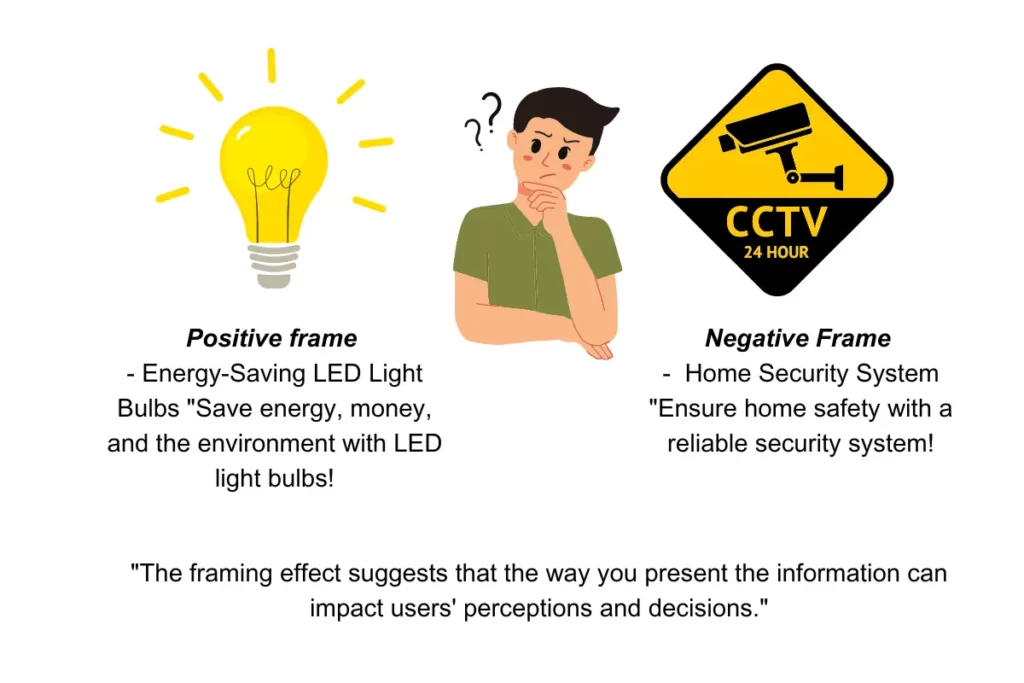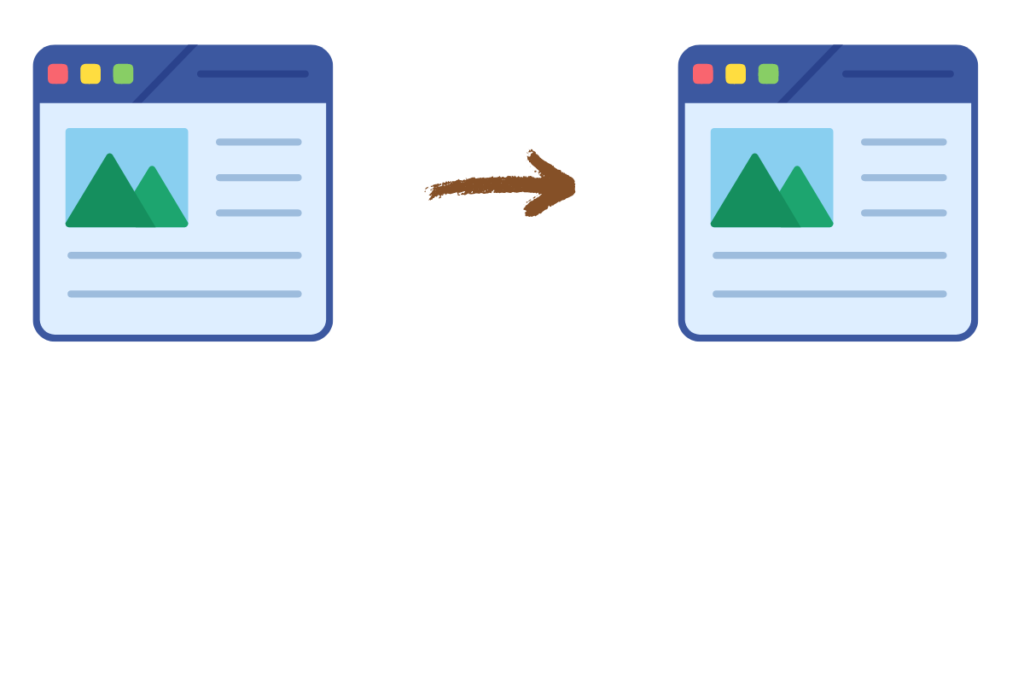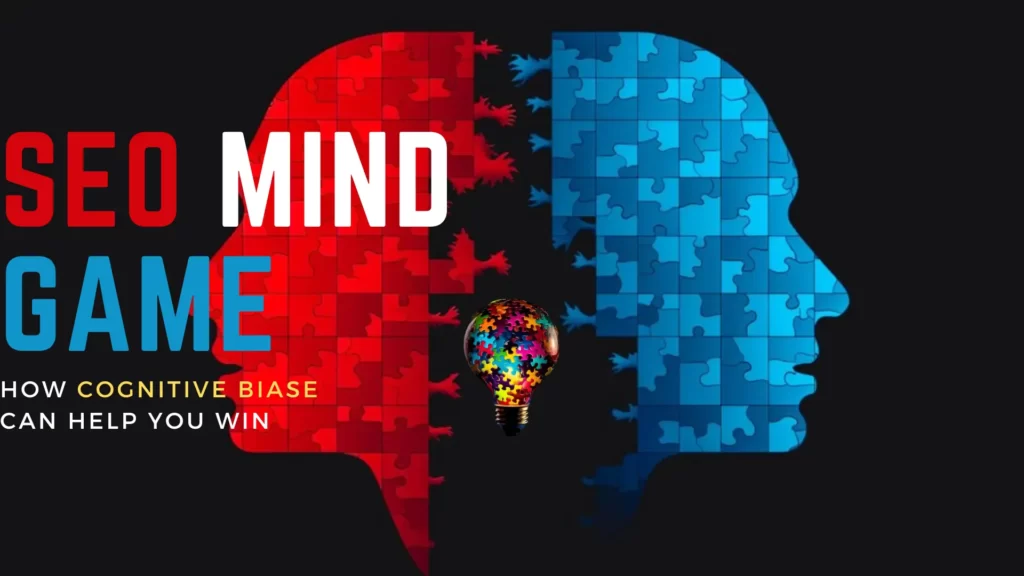Overview of Cognitive Biases
Cognitive Bias Definition and Explanation
Cognitive biases are thought patterns that can unintentionally impact how individuals perceive things and make decisions. Human cognition is naturally biased, which significantly affects user behavior and SEO.
Knowing about cognitive biases is crucial for SEO and user behavior.

In today’s digital era, comprehending cognitive biases, or mastering the SEO Mind Game, is vital due to high stakes and fierce competition. Developing winning strategies that appeal to the target market and boost conversion rates can be assisted by understanding cognitive biases, essentially helping you win the SEO Mind Game.
This blog post examines cognitive biases’ influence on user behavior and SEO.
Cognitive Discrimination and User Behavior
A Brief on Cognitive Biases That Affect User Decision-Making
Cognitive biases significantly affect how users behave. The most common cognitive biases include anchoring, availability, and confirmation biases.
Cognitive biases like Loss Aversion can impact user behavior. Here’s an illustration of this phenomenon.

The cognitive bias called loss aversion occurs when individuals experience more pain from losing something than pleasure from gaining an equally valuable item. This bias influences decision-making in different situations. The impact of this bias is significant for user behavior, particularly when they anticipate losing out in cases such as pricing and promotions.
The Details Behind How Cognitive Biases Can Influence User Behavior to Be Irrational
Users’ perceptions, judgments, and decision-making are subject to the influence of cognitive biases causing irrational behavior. Making poor decisions that do not match one’s preferences or interests is shared among users. Decisions that are impacted by cognitive biases result in this happening.
Improving website optimization and user experience depends on understanding these biases.

Creating a captivating user experience requires businesses and marketers to factor in the biases of their users. They can develop more efficient and inclusive products and services by being aware. Making websites more user-friendly and producing compelling content for the desired audience is possible when businesses understand how cognitive biases shape user behavior.
SEO Cognitive Biases
Understanding How Cognitive Biases Impact Search Engine Optimization
Cognitive biases greatly influence SEO. The behavior of users during information searches, interpretation of search results, and interaction with website content are governed by cognitive biases.
This detail explains how cognitive biases, particularly the Framing Effect, can impact SEO tactics.

Information presentation impacts people’s choices; this bias is known as the framing effect. SEO experts know that framing is critical to optimizing user engagement and actions on websites and search results.
User Engagement with Search Results and Website Rankings: The Role of Cognitive Biases
Perceptions of the relevance, legitimacy, and appeal of search results and website rankings are impacted by cognitive biases, which can ultimately lead to decreased user engagement. Reduced website traffic and revenue are possible outcomes of this situation. Enterprises aware of how cognitive biases affect user engagement can craft optimized content that appeals to their ideal customer.
Considering cognitive biases when developing SEO strategies and content is crucial.
Considering cognitive biases is crucial in both SEO strategies and content creation to ensure user engagement and compelling content. By acknowledging how cognitive biases impact user engagement, businesses can create better content for search and improve overall user behavior.
Accessibility Preferences and User Behavior

Understanding How the Availability Bias Impacts Decision-Making
The tendency to base one’s judgments and choices on easily accessible and memorable information can lead to availability bias. In cases of rapid decision-making scenarios like online shopping or e-commerce, this bias notably influences user behavior.
How the Availability Bias Shapes Users’ Attitudes and Decisions
Individuals’ views and determinations may be influenced by availability bias as they typically lean more toward memory than factual information. If supporting the conclusions requires more accurate or complete data, this bias can cause false perceptions and judgments.
Especially impactful is the availability bias on user engagement and conversion rates
Availability bias can impact user engagement and conversion rates by shaping their perception of relevance and credibility. Perceived irrelevance or bias of information can deter users from engaging or converting.
Minimize availability bias through website design and marketing strategies.

Objective, pertinent content that caters to users’ interests and preferences is vital in mitigating the adverse effects of availability bias in website design and marketing. To combat bias’s adverse effects while boosting user interaction, companies should offer reliable, complete data to their consumers.
SEO and confirmation bias learn how confirmation bias influences information processing.
Confirmation bias can cause individuals to selectively search for, read, and recall information that aligns with their established opinions. SEO and user search behavior are greatly affected by this bias.
A Comprehensive Examination of How Confirmation Bias Affects User Search Queries and Website Authenticity
Search query patterns and website reliability can be affected by confirmation bias due to its influence on users’ perceptions of relevance and credibility. Even if the information is not entirely accurate or objective, users rely on information reinforcing their pre-existing beliefs and attitudes during research.
Confirmation Bias: Its Effects on SEO Techniques and Content Optimization
Confirmation bias can impact SEO strategies and content optimization by influencing user search preferences and behavior. To boost visibility, engagement, and conversions, businesses should aim to produce content that matches the tastes and beliefs of their audience.
Ways to Combat Confirmation Bias in SEO to Elevate User Engagement and Trust
Addressing confirmation bias in SEO requires producing information that resonates with users’ interests and preferences and remains unbiased and accurate. Creating compelling content while addressing user biases can help businesses boost their SEO performance and earn users’ trust.
Optimization of Conversions and Anchoring Bias

How Anchoring Bias Influences Decision-Making: An Overview
Decisions made heavily reliant on the initial information are examples of anchoring bias. How users gauge value and price may be significantly influenced by this partiality. This could affect their purchasing decision and conversion rates.
How Anchoring Bias Shapes User Perception of Prices and Value
The anchoring bias impacts how users view prices and value by creating a reference point that consumers depend on when purchasing. Consumers’ decisions concerning the product’s weight and payment preference could be influenced by this bias, which has implications for their purchasing choices.

The influence of anchoring bias must be considered in developing effective conversion optimization strategies.
The consideration of the anchoring bias is a crucial factor in developing effective conversion optimization strategies for businesses. Boosting conversion rates is possible for companies that create offers that align with customer preferences regarding price and value perception.
Using Anchoring Bias to Up Your Conversions and Sales Game
Leveraging anchoring bias requires crafting compelling value propositions that align with users’ perceptions of worth and cost. To enhance conversions, sales, and marketing effectiveness, businesses should prepare offers that align with users’ preferences or interests.
User Behavior and Social Proof
An Introduction to Social Proof and Its Effects on User Actions
A cognitive bias called social proof occurs when individuals base their attitudes and beliefs on the perceptions and opinions of others. The presence of social influence in contexts like brand perception and purchase decisions may lead to bias that significantly impacts user behavior.
Testimonials and user reviews are examples of social proof that can significantly influence user decision-making.
Users make decisions based on how they perceive a source’s trustworthiness, believability, and attractiveness. Social proof is one factor that influences these perceptions. Reviews, endorsements, and testimonials are ways to show social proof.
Discover how social proof affects user engagement, trust, and decision-making.
A point of reference provided by social proof significantly impacts user trust, engagement, and purchasing decisions. Businesses seeking to increase both user trust and concentration,
along with conversion rates, should implement social proof.
Approaches for Including Social Proof in Website Design and SEO to Heighten User Belief
Social proof can be effectively added to SEO and website design by including user reviews, endorsements, and testimonials in content. Social proof can help businesses increase user confidence, engagement, and overall SEO performance.
Recency Effects and User Interaction

User Behavior and the Definition of Recency Bias
When individuals let recent events influence their opinions and decisions, it is known as recency bias. The bias could impact the user engagement metrics such as bounce rate, conversion rates, and time spent on a page.
User Perspective: The Effect of Recency Bias on Judging Content Freshness and Relevance
The perception of content’s freshness and relevance is influenced by recency bias as it forces users to judge based on recent information for making their decisions and opinions. The currency and relevance of data are often important factors for users when it comes to engaging with website content.
Detailed Analysis of How Recency Bias Impacts User Engagement Metrics like Average Session Duration and Bounce Rate
Recency bias can affect user engagement metrics by impacting user behavior, like time spent on the page and bounce rate. Relevant and current content production can help businesses increase their SEO results and engage users more effectively.
Maximizing SEO Results and Enhancing User Engagement Using Recency Bias
Producing new, pertinent content that aligns with users’ interests and preferences is critical to leveraging recency bias. Enterprises that deliver appropriate and fascinating content to users can raise user engagement levels and strengthen their SEO performance.
FAQs:
What are cognitive biases, and how do they impact decision-making in SEO?
-Cognitive biases are mental shortcuts that influence decision-making in SEO by distorting judgment.
Which cognitive biases are most prevalent in SEO strategy, and how can they be utilized to improve results?
-Confirmation bias, anchoring bias, availability bias, and social proof bias are prevalent in SEO strategy. Leveraging these biases can improve results by aligning content, using persuasive language, emphasizing popularity, and showcasing positive reviews.
How can marketers overcome the impact of cognitive biases on SEO decision-making, and ensure data-driven strategies?
-To overcome cognitive biases in SEO decision-making, marketers should adopt data-driven strategies, utilize A/B testing, seek diverse perspectives, and challenge assumptions.
What are some examples of successful SEO campaigns that have utilized cognitive biases to improve results?
-Successful SEO campaigns have utilized cognitive biases such as scarcity bias and the bandwagon effect to create urgency, encourage engagement, and improve results.
What ethical considerations exist around the use of cognitive biases in SEO, and how should marketers approach these concerns?
-Ethical considerations around cognitive biases in SEO involve transparency, fairness, and avoiding manipulation. Marketers should prioritize honesty, user consent, and long-term benefits while addressing these concerns.
Conclusion
Outline of the Fundamental Ideas Touched Upon in the Blog Publication
This blog post discussed how cognitive biases affect user behavior and search engine optimization. We discussed how cognitive biases influence users’ decisions, searches, and information perception.
Stress the Value of Identifying Cognitive Biases in User Behavior and SEO

A solid understanding of cognitive biases enables businesses and marketers to develop compelling marketing strategies that appeal to their desired audience and drive up conversion rates. By recognizing the influence of cognitive biases on user behavior and SEO, businesses can improve website optimization and generate engaging content that appeals to their audience.
Advocate for more investigation into cognitive biases and their potential application in optimizing websites and marketing strategies.
Businesses must prioritize promoting continued investigation and practical application of cognitive biases in website optimization and marketing strategies to remain competitive and amplify their marketing effectiveness. Improving their overall performance is possible by gaining a better understanding of their target audience through this approach. By keeping current with the latest research and industry standards on cognitive biases, enterprises can devise practical methods that engage with their audience and enhance their promotional initiatives.




